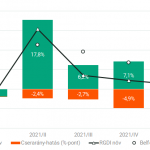
Hajdu Tamás tudományos munkatárs és Hajdu Gábor közös cikke Ambient temperature and sexual activity: Evidence from time use surveys címmel megjelent a Demographic Research folyóiratban.
Background: Previous research has found that unusually hot temperatures reduce birth rates eight to ten months later.
Objective: We examine one of the potential mechanisms behind this relationship: the connection between ambient temperature and sexual activity.
Methods: We use individual-level data provided by three waves of the Hungarian Time Use Survey between 1986 and 2010 and daily weather data from the European Climate Assessment & Dataset project.
Results: Hot temperatures do not have a significant effect on sexual activity on a given day. Studying the dynamics of the relationship, we found that temperature does not influence sexual activity on subsequent days either.
Conclusions: Since high temperatures seem to have no negative effect on sexual activity, the relationship between temperature and sexual activity might be a mechanism of minor importance in the relationship between temperature and birth rates.
Contribution: Our paper is the first study of the relationship between ambient temperature and sexual activity that uses time use data.
Nem található esemény a közeljövőben.
A KRTK Közgazdaság-tudományi Intézet teljesítményéről A KRTK KTI a RePEc/IDEAS rangsorában, amely a világ közgazdaság-tudományi tanszékeit és intézeteit rangsorolja publikációs teljesítményük alapján, a legjobb ... Read More »

Tisztelt Kollégák! Tudományos kutatóként, intézeti vezetőként egész életünkben a kutatói szabadság és felelősség elve vezetett bennünket. Meggyőződésünk, hogy a tudomány csak akkor érhet el ... Read More »

Srí Lanka: a 2022-es gazdasági válság leckéje – A. Krueger Lessons from Sri Lanka Anne O. Krueger Jul 25, 2022 – Project Syndicate ... Read More »

A permanens válság korában élünk – J. Meadway We’re living in an age of permanent crisis – let’s stop planning for a ‘return ... Read More »

A 2021 végén, illetve 2022 elején tapaszalt 6, illetve 7%-os cserearányromlás brutális reáljövedelem-kivonást jelentett a magyar gazdaságból. A külső egyensúly alakulásával foglalkozó elemzések többnyire ... Read More »
